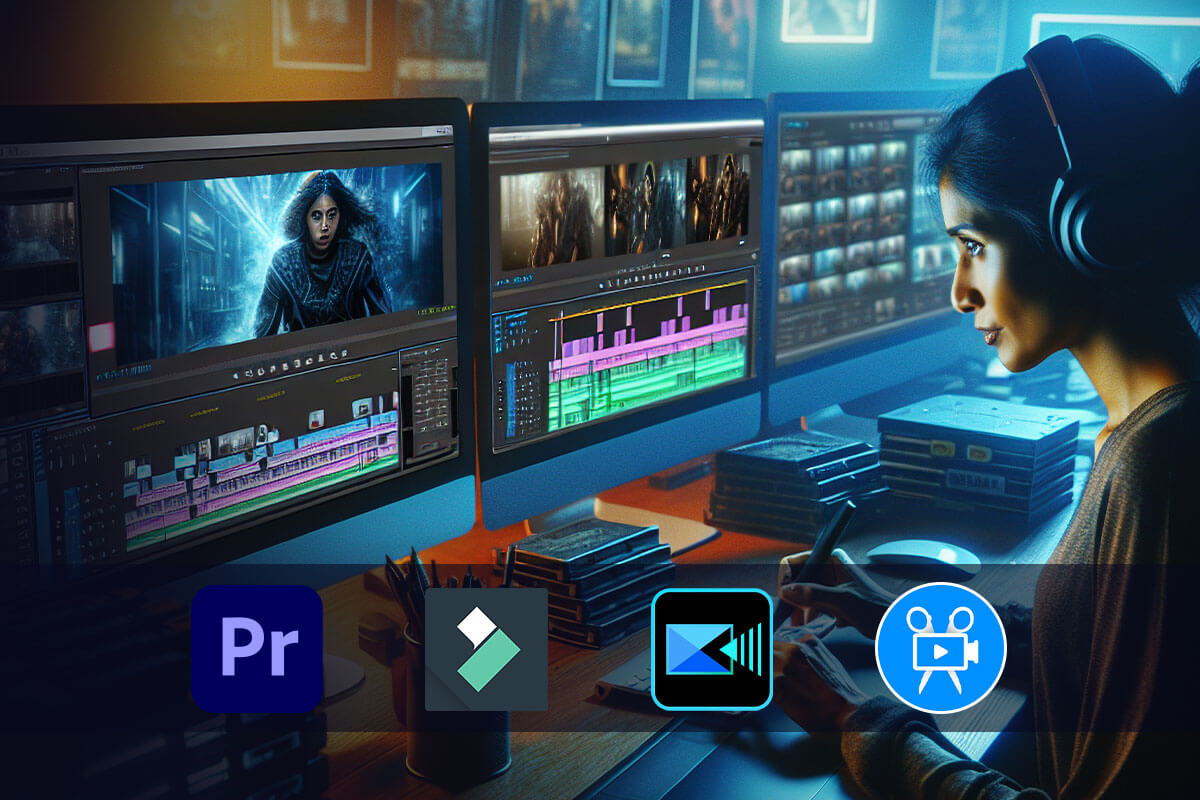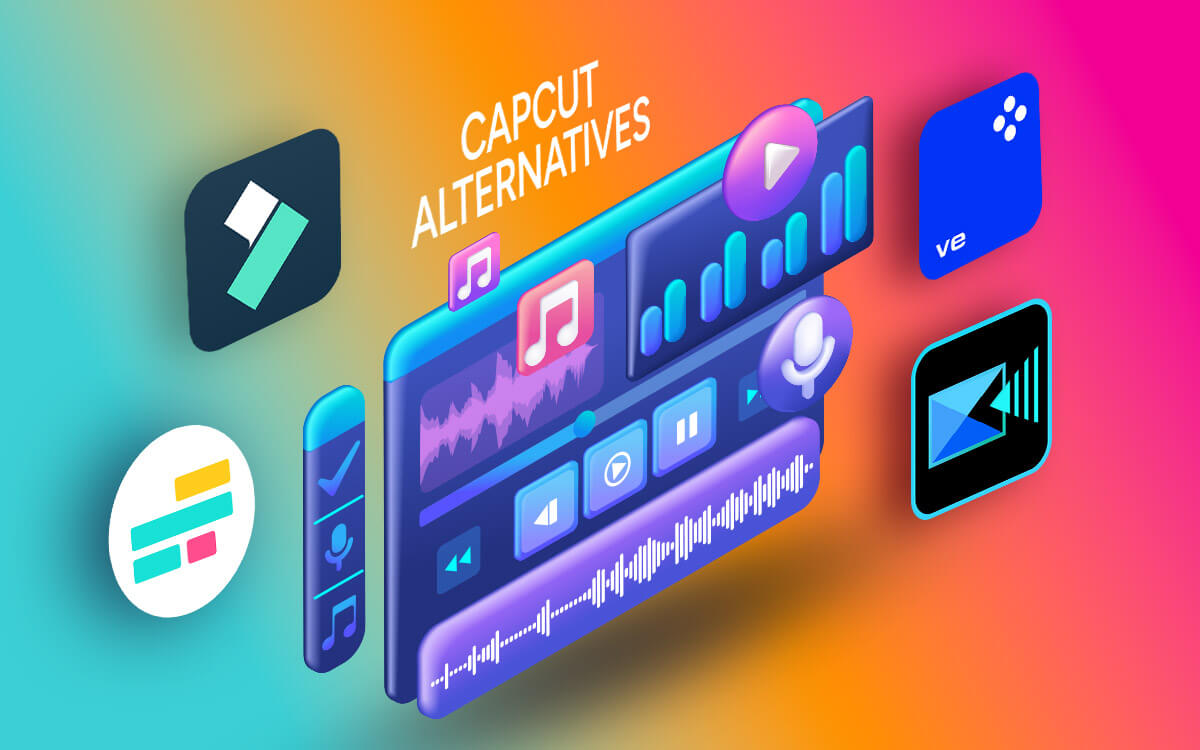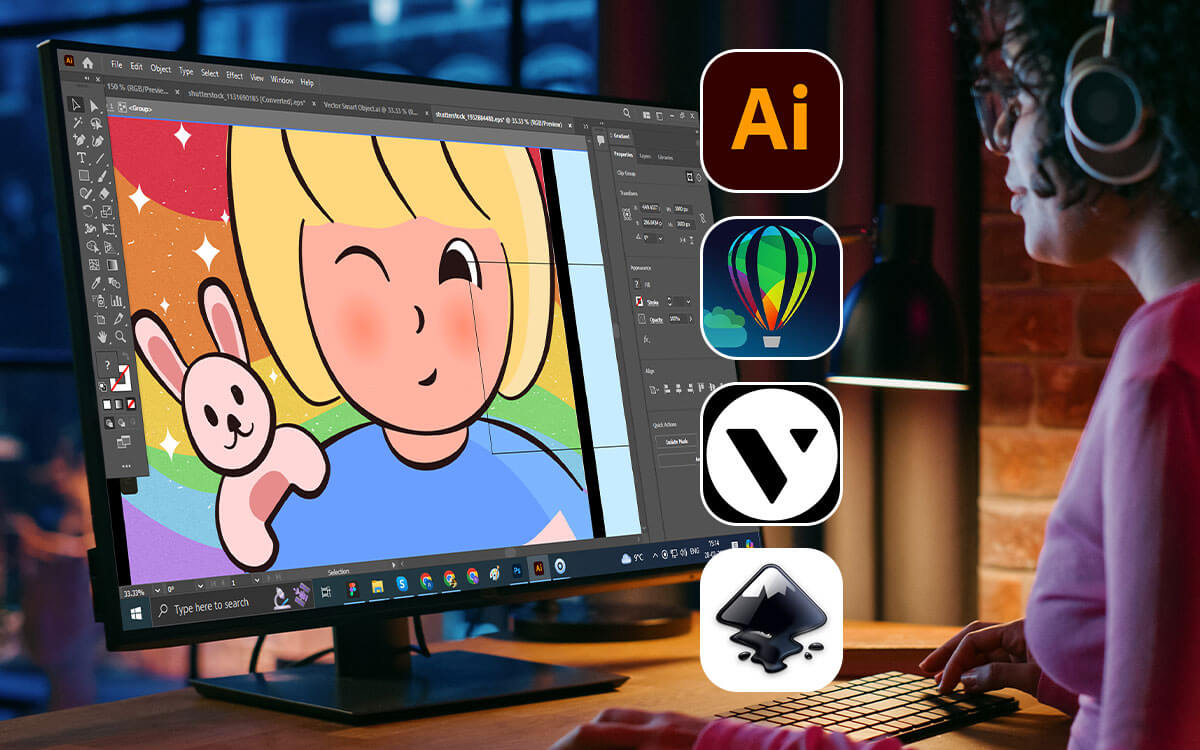In the world of music production, the power to create has never been more accessible, thanks to the availability of a plethora of free music/beat-making software options. In this post, we will look at the 10 best free music-making software available for Windows 11/10 PCs that you can easily download.The world of music production has transformed in recent years, with advancements in technology making it easier than ever for aspiring musicians to create and share their work. While professional-grade software can be expensive, there are numerous free options available that offer a wide range of features and capabilities. In this comprehensive guide, we'll explore the 10 best free music/beat-making software for Windows 11/10. This will empower you to unleash your musical creativity without breaking the bank.
Best Beat-Making Software for Windows 10 PCs
These versatile tools empower aspiring and seasoned musicians alike to transform their creative visions into tangible melodies and beats, without breaking the bank. If you're running Windows 11/10 and harbor a passion for music production, this comprehensive guide is definitely for you. Each software has been carefully selected based on its unique features, user-friendliness, and overall value proposition. From seamless interfaces to powerful features, these software choices are bound to elevate your music-making experience. So, without further ado, let’s get started.1. Cakewalk by BandLab
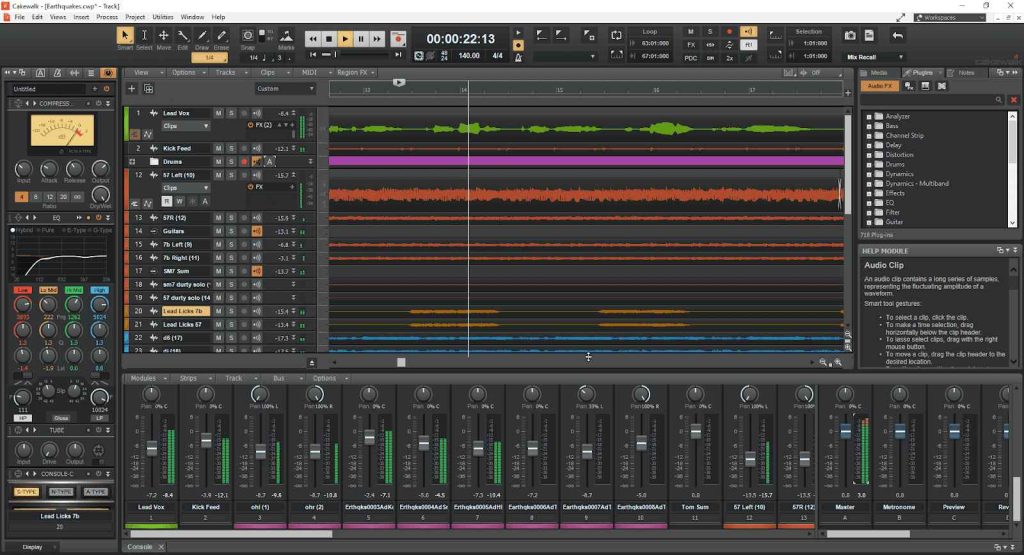 Formerly known as SONAR, Cakewalk by BandLab provides a pro-level music production experience without the associated cost. This fully-featured digital audio workstation (DAW) boasts an intuitive user interface and supports unlimited audio and MIDI tracks. Cakewalk's advanced features include a robust set of virtual instruments, audio effects, and a flexible console view for precise mixing. The software's integration with BandLab's collaborative platform adds another layer of versatility, making it an ideal choice for musicians looking to collaborate seamlessly.
Notable Features:
Formerly known as SONAR, Cakewalk by BandLab provides a pro-level music production experience without the associated cost. This fully-featured digital audio workstation (DAW) boasts an intuitive user interface and supports unlimited audio and MIDI tracks. Cakewalk's advanced features include a robust set of virtual instruments, audio effects, and a flexible console view for precise mixing. The software's integration with BandLab's collaborative platform adds another layer of versatility, making it an ideal choice for musicians looking to collaborate seamlessly.
Notable Features:
- Extensive collection of virtual instruments, effects, and loops.
- Advanced MIDI editing capabilities.
- Multitrack audio recording and mixing.
- Step sequencer for drum programming.
- Support for third-party plugins.
- Free and powerful.
- Scalable for all levels of experience.
- Active community.
- Regular updates.
- Steep learning curve.
- Some features require additional purchases.
2. MAGIX Music Maker
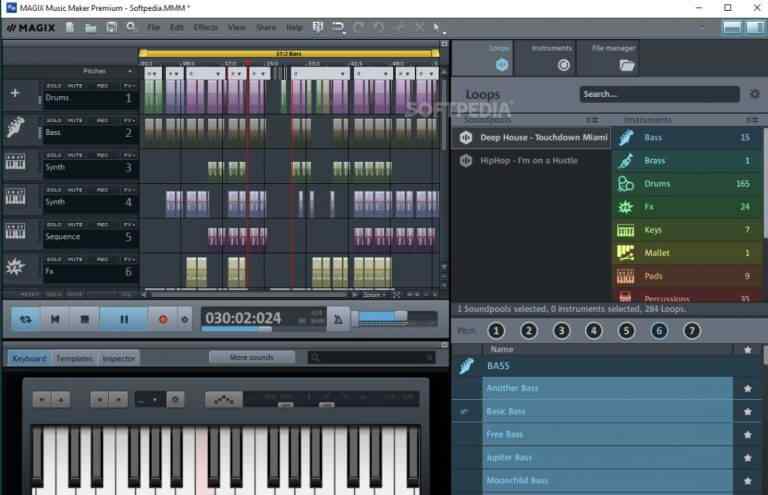 Magix Music Maker is a beginner-friendly DAW software that provides a seamless experience to music production for both amateurs & pro users. Its intuitive interface and step-by-step tutorials make it easy to navigate, even for those with no prior experience. Magix Music Maker offers a generous selection of sounds, virtual instruments, and effects, allowing users to explore various musical genres. It is a great way to get started with music production and explore different genres and styles. It uses a drag-and-drop interface that makes it easy to create songs by arranging loops and layering sounds.
Notable Features:
Magix Music Maker is a beginner-friendly DAW software that provides a seamless experience to music production for both amateurs & pro users. Its intuitive interface and step-by-step tutorials make it easy to navigate, even for those with no prior experience. Magix Music Maker offers a generous selection of sounds, virtual instruments, and effects, allowing users to explore various musical genres. It is a great way to get started with music production and explore different genres and styles. It uses a drag-and-drop interface that makes it easy to create songs by arranging loops and layering sounds.
Notable Features:
- Drag-and-drop functionality.
- Variety of virtual instruments.
- Wide range of effects.
- Ability to record vocals or instruments.
- A large sound pool of loops, samples, and sound effects.
- Versatile
- Supports third-party plugins.
- Compatible with Windows and macOS.
- Regular updates.
- Limited MIDI editing capabilities.
- Limited audio recording and editing capabilities
3. Audacity
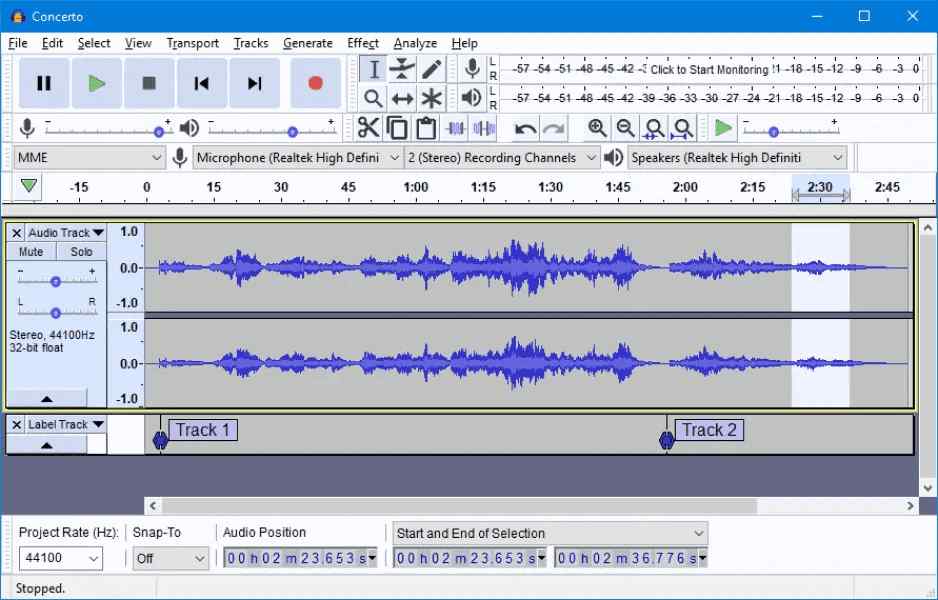 Audacity is a powerhouse in the realm of free music-making software. Its user-friendly interface & features make it one of the best tools in the market. . From basic audio recording and editing to advanced multi-track mixing, Audacity seamlessly caters to both beginners and experienced musicians. The software supports a wide range of file formats and includes essential tools like noise reduction and pitch correction. Audacity's extensive plugin support further enhances its capabilities, allowing users to customize their music-making experience.
Notable Features:
Audacity is a powerhouse in the realm of free music-making software. Its user-friendly interface & features make it one of the best tools in the market. . From basic audio recording and editing to advanced multi-track mixing, Audacity seamlessly caters to both beginners and experienced musicians. The software supports a wide range of file formats and includes essential tools like noise reduction and pitch correction. Audacity's extensive plugin support further enhances its capabilities, allowing users to customize their music-making experience.
Notable Features:
- Non-destructive audio editing.
- Multitrack recording and mixing.
- Extensive audio effects and processing tools.
- Sample editing and loop creation.
- Third-party plugins support.
- Free and open-source.
- Cross-platform compatibility.
- Wide range of features.
- Extensive plugin support.
- Limited multitrack capabilities.
- No real-time preview.
4. LMMS
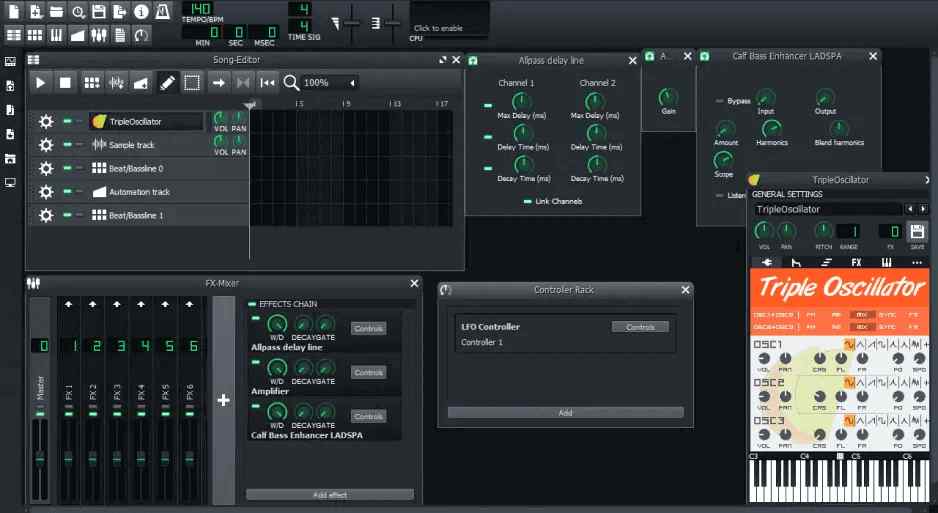 LMMS is an open-source music production software that comes packed with even premium options. This comprehensive platform includes a variety of built-in instruments, synthesizers, and drum kits, empowering users to experiment with different sounds and genres. With a sleek interface and a user-friendly piano roll editor, LMMS facilitates the creation of complex melodies and beats. The software's community-driven development ensures regular updates and an extensive library of plugins, making it a go-to choice for those seeking professional-grade music production on a budget.
Notable Features:
LMMS is an open-source music production software that comes packed with even premium options. This comprehensive platform includes a variety of built-in instruments, synthesizers, and drum kits, empowering users to experiment with different sounds and genres. With a sleek interface and a user-friendly piano roll editor, LMMS facilitates the creation of complex melodies and beats. The software's community-driven development ensures regular updates and an extensive library of plugins, making it a go-to choice for those seeking professional-grade music production on a budget.
Notable Features:
- Open-source and highly customizable.
- Wide range of virtual instruments, effects, and samples.
- Advanced MIDI editing capabilities.
- Pattern-based music creation.
- A vast array of instruments and effects.
- Support for LADSPA plugins.
- Suitable for beginners.
- Active community and support.
- No native VST plugin support.
- Occasional bugs and stability issues.
5. orDrumbox
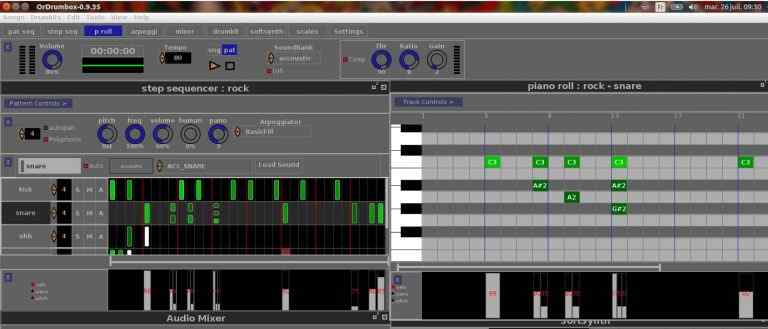 OrdrumBox focuses on the art of drum sequencing, providing a platform for users to create intricate patterns and beats. This free and open-source software features a user-friendly interface and an extensive library of drum kits, allowing musicians and producers to experiment with different sounds and styles. OrdrumBox's pattern-based approach simplifies the creation of dynamic drum sequences, making it an excellent choice for electronic music enthusiasts, beatmakers, and anyone looking to add a rhythmic flair to their compositions.
Notable Features:
OrdrumBox focuses on the art of drum sequencing, providing a platform for users to create intricate patterns and beats. This free and open-source software features a user-friendly interface and an extensive library of drum kits, allowing musicians and producers to experiment with different sounds and styles. OrdrumBox's pattern-based approach simplifies the creation of dynamic drum sequences, making it an excellent choice for electronic music enthusiasts, beatmakers, and anyone looking to add a rhythmic flair to their compositions.
Notable Features:
- Automation for creating new beats.
- Drag and drop functionality.
- Create and import drum kits.
- Polyrhythm capabilities.
- Cross-platform compatibility.
- Great automation.
- Rhythms and sounds database.
- Pattern Sequencing.
- Export Options.
- Not the most refined finish.
- Learning curve.
6. DarkWave Studio
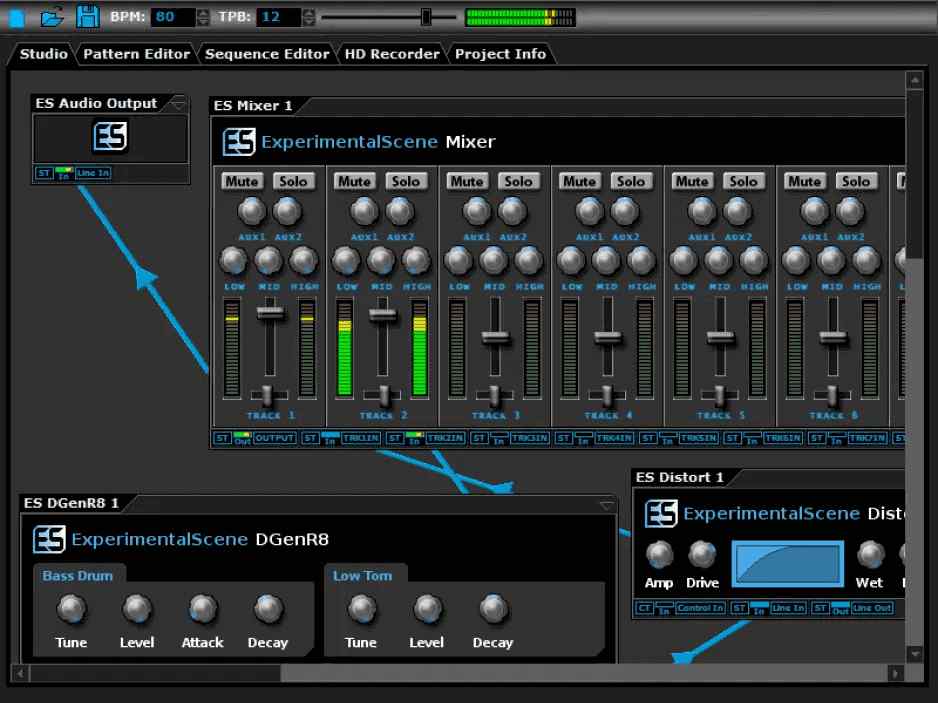 DarkWave Studio is a unique DAW that blends traditional music production features with a retro-inspired aesthetic. Its intuitive interface and integrated virtual instruments make it an excellent choice for creating chiptune, electronic, and experimental music. It's designed for electronic music composition, providing a platform where users can create and arrange patterns, sequences, and songs. It features a pattern editor where users can create and arrange patterns for instruments and sequences. This allows for the creation of complex musical arrangements.
Notable Features:
DarkWave Studio is a unique DAW that blends traditional music production features with a retro-inspired aesthetic. Its intuitive interface and integrated virtual instruments make it an excellent choice for creating chiptune, electronic, and experimental music. It's designed for electronic music composition, providing a platform where users can create and arrange patterns, sequences, and songs. It features a pattern editor where users can create and arrange patterns for instruments and sequences. This allows for the creation of complex musical arrangements.
Notable Features:
- Modular Virtual Studio.
- Multitrack Hard Disk Recorder.
- VST/VSTi Plug-In Support.
- Low Latency ASIO And DirectSound Audio Output Support.
- DirectSound Full Duplex Support for Low Latency Input and Output.
- Lightweight
- Full automation.
- Multi-track Support.
- Modular design.
- Limited Instrument Library.
- Windows Only.
7. Musink Lite
 Musink Lite caters to musicians who prefer a notation-based approach to music creation. This free notation software offers a straightforward interface and seamless integration of sheet music, making it a valuable tool for composers, arrangers, and music educators. Musink Lite's real-time editing capabilities and support for MIDI input enhance the composition process, allowing users to see their musical ideas come to life on the virtual score. Whether you're creating sheet music for a full orchestra or a solo performance, Musink Lite streamlines the notation process with its user-friendly design.
Notable Features:
Musink Lite caters to musicians who prefer a notation-based approach to music creation. This free notation software offers a straightforward interface and seamless integration of sheet music, making it a valuable tool for composers, arrangers, and music educators. Musink Lite's real-time editing capabilities and support for MIDI input enhance the composition process, allowing users to see their musical ideas come to life on the virtual score. Whether you're creating sheet music for a full orchestra or a solo performance, Musink Lite streamlines the notation process with its user-friendly design.
Notable Features:
- Comprehensive notation tools.
- Professional-quality output.
- MIDI import and export.
- Automatic page layout.
- Support for a variety of instruments.
- User-Friendly Interface.
- Real-Time Feedback.
- Support for MIDI Playback.
- Customization Options.
- Less Comprehensive Than Professional Software.
- Possible Stability Issues.
8. Hydrogen
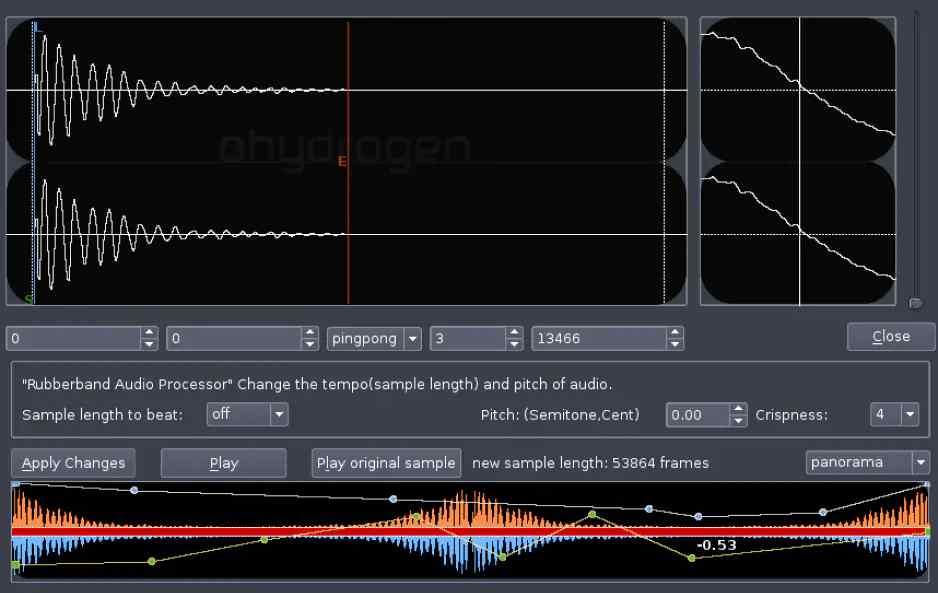 Hydrogen caters specifically to beat makers, offering a dedicated drum machine platform with a user-friendly interface. This open-source software provides a wide range of drum kits, allowing users to create intricate beats effortlessly. Hydrogen's pattern-based sequencer facilitates the creation of complex rhythms, making it an ideal choice for electronic music producers and anyone with a penchant for crafting unique percussion patterns. The software's simplicity and focus on drum sequencing make it a valuable addition to any music producer's toolkit.
Notable Features:
Hydrogen caters specifically to beat makers, offering a dedicated drum machine platform with a user-friendly interface. This open-source software provides a wide range of drum kits, allowing users to create intricate beats effortlessly. Hydrogen's pattern-based sequencer facilitates the creation of complex rhythms, making it an ideal choice for electronic music producers and anyone with a penchant for crafting unique percussion patterns. The software's simplicity and focus on drum sequencing make it a valuable addition to any music producer's toolkit.
Notable Features:
- Step sequencer for drum programming.
- Extensive pattern library and preset grooves.
- Real-time pattern editing and manipulation.
- MIDI output for synchronization with other DAWs.
- Support for third-party drum samples.
- Cross-platform and open-source.
- Powerful features.
- Active Community.
- Limited sound library.
- Lack of some advanced features.
9. SoundBridge
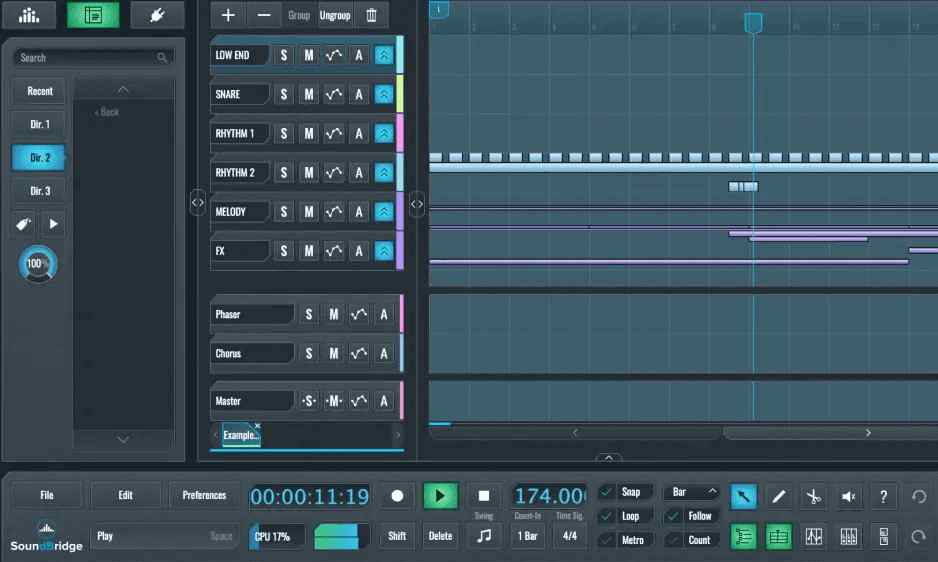 SoundBridge is a modern and beginner-friendly digital audio workstation (DAW) designed specifically for Windows. It offers a streamlined interface, intuitive features, and a comprehensive set of tools to help you create professional-quality music productions. It is packed with powerful features and tools that cater to every aspect of music production. It includes a built-in virtual instrument rack, a versatile audio editor, a fully equipped mixer, and a vast library of high-quality sound samples. Its clean layout and well-organized tools allow you to focus on your creative process.
Notable Features:
SoundBridge is a modern and beginner-friendly digital audio workstation (DAW) designed specifically for Windows. It offers a streamlined interface, intuitive features, and a comprehensive set of tools to help you create professional-quality music productions. It is packed with powerful features and tools that cater to every aspect of music production. It includes a built-in virtual instrument rack, a versatile audio editor, a fully equipped mixer, and a vast library of high-quality sound samples. Its clean layout and well-organized tools allow you to focus on your creative process.
Notable Features:
- Record and edit audio and MIDI.
- Non-destructive editing.
- Loop recording.
- Support for VST plugins.
- Multi-track mixing.
- RitMix drum machine.
- Free sound sample library.
- VST audio plug-in support.
- Free academy program.
- A limited number of effects.
- Limited audio editing tools.
10. Mixxx
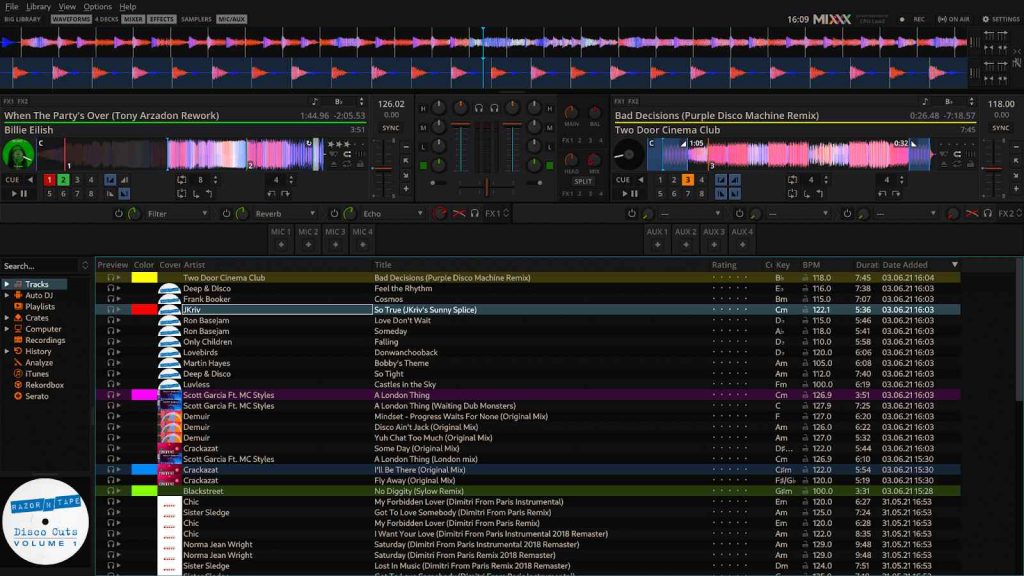 Mixxx is a free and open-source digital audio workstation (DAW) and DJ software that is designed for mixing, recording, and performing live music. It is available for Windows, macOS, and Linux, and it supports a wide range of audio and MIDI devices. It comes with a large library of samples and effects that you can use to enhance your mixes. You can also add your samples and effects to the library. Mixxx allows you to load and play tracks from multiple sources, such as your hard drive, CDs, or online streaming services.
Notable Features:
Mixxx is a free and open-source digital audio workstation (DAW) and DJ software that is designed for mixing, recording, and performing live music. It is available for Windows, macOS, and Linux, and it supports a wide range of audio and MIDI devices. It comes with a large library of samples and effects that you can use to enhance your mixes. You can also add your samples and effects to the library. Mixxx allows you to load and play tracks from multiple sources, such as your hard drive, CDs, or online streaming services.
Notable Features:
- Multiple decks for mixing and playback.
- Extensive sample library and effects.
- Automation capabilities for creating dynamic mixes.
- Support for MIDI devices and turntables.
- Recording and editing of audio.
- Cross-platform.
- Supports a wide variety of audio formats and DJ controllers.
- Extensive Hardware Support.
- Live Broadcasting.
- Less Comprehensive Library Management.
- Not as user-friendly as some other DJ software.

